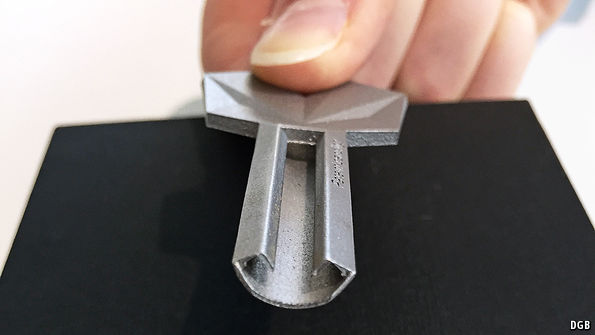A 3D-printed key that can’t be copied
 Hidden depths
Hidden depthsKEYS have been around for a long time. The earliest, made from wood, date back 4,000 years, to the ancient Egyptians. The Romans improved them a bit by making them from metal. But there, more or less, they have stayed. Electronic card-keys aside, a key is still, basically, a piece of metal sporting a series of grooves, teeth and indentations which, when inserted into a keyway, line up to move pins and levers to lock or unlock a mechanism.
Such keys are made with conventional manufacturing techniques, such as cutting and stamping. But now there is a new way, in the form of 3D printing, to craft metal objects. And keys are about to succumb to it, to the great benefit of keyholders.
A 3D printer works by melting together layers of material that are added successively to the object being created. It can thus make something from the inside out, as it were, by printing intricate internal features and then covering them with a solid layer. Features shielded from view are extremely difficult to copy, let alone reproduce using normal machine tools. What better way to reinvent the key, reckoned Alejandro Ojeda, a mechanical engineer who…Continue reading
Source: Economist




